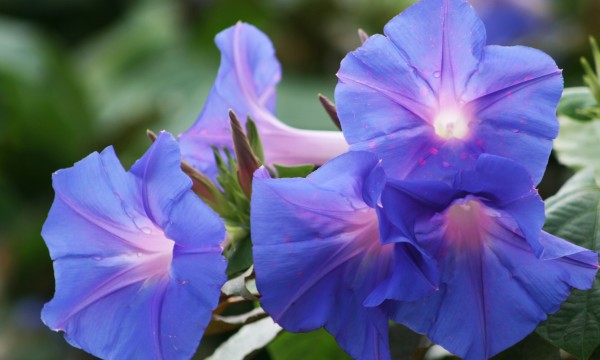Here are some great things to keep in mind for all those who plant annual flowers in their gardens.
- Browse Categories
- All Tips
-
Home & Garden
- All
- Appliances
- Bathroom
- Cleaning
- Crafts
- Decorating
- Electrical
- Flooring
- Furniture
- Garage Door
- Gardening
- Green Living
- Heating
- Home Alarm Systems
- Home Maintenance
- Home Remedies
- Home Security
- Home Staging
- House Sitting
- Junk Removal
- Kitchen
- Lawn Care
- Lock Systems
- Moving
- Outdoor Living
- Pest Control
- Plumbing
- Renovation
- Roofing
- Snow Removal
- Storage
- Tools
- Tree Service
- Health
- Family
- Travel
- Auto
- More Tips

7 pro tips for growing annual flowers
June 23, 2015

1. Less is more
- Remove all spent flowers and any leaves that turn yellow.
- Occasionally pinching back your plants will encourage them to be bushier and flower more profusely.
- Use pruning shears or scissors to remove dead flowers from annuals about once a week from early summer to fall.
When the plants begin to appear exhausted, or winter is around the corner, allow a few flowers to develop seeds to sow and grow next season.
2. Not all food works
Annuals don't like manure or heavy fertilizer.
- Too much nitrogen results in plants with too many leaves, too many stems, and too few flowers.
- The only manure suitable for use on annuals is composted manure that is thoroughly worked into the soil prior to planting, or you can use a slow-release fertilizer.
- If annuals show little new growth and seem to need feeding, drench them with a balanced, water-soluble plant food.
3. Let them nap
Some annuals need a rest from flowering, and if allowed to take a blooming break, they often come back bigger and better in late summer and early fall.
- Don't worry if your marigolds or nasturtiums look healthy but have few flowers in the heat of summer. As nights become longer and cooler, they will come back into bloom again.
4. Annuals for drying
Traditional favourites include everlasting (Helischrysum bracteatum) and its close relatives winged everlasting (Ammobium) and immortelle (Helipterum). Other candidates are statice, love-in-a-mist, globe amaranth, and bells of Ireland.
- Plan to start plants from seed if you want to grow unusual dried flowers, because bedding plants are hard to find.
- Harvest when the blooms are just opening and air-dry upside down in a warm, dry place away from strong sun. Use some of the blossoms to make colourful potpourri.
5. Flowers for hiding
- Climbing annuals such as sweet peas and morning glories will quickly disguise a chain-link fence, or you can grow them over a trellis to hide an unsightly view, such as garbage cans.
Other vigorous climbing annuals include scarlet runner beans, black-eyed Susan vines, and hyacinth beans. Most climbing annuals are easy to grow from seed.
6. Annual aromas
Fragrant annuals can fill the garden with their perfume, and several are easy to grow.
- Try flowering tobacco (Nicotiana), vanilla-scented heliotropes and old-fashioned sweet peas. Some types of petunias are surprisingly fragrant, too.
7. Use high-yielding annuals
Cut-and-come-again annuals produce more flowers the more you gather them for bouquets.
- Instead of compact dwarf varieties, look for tall types of calendulas, snapdragons and zinnias or sunflowers described as branching types.







